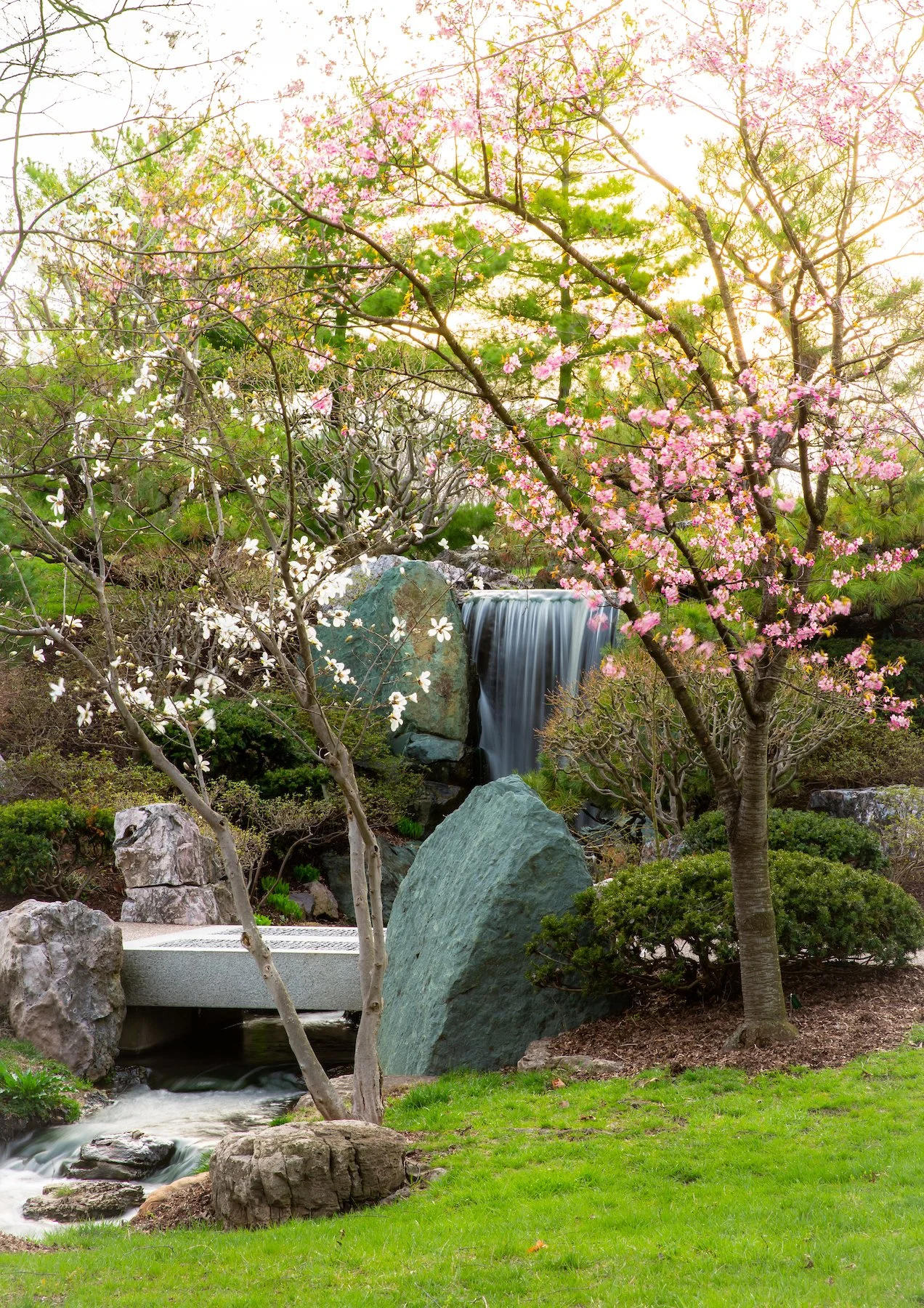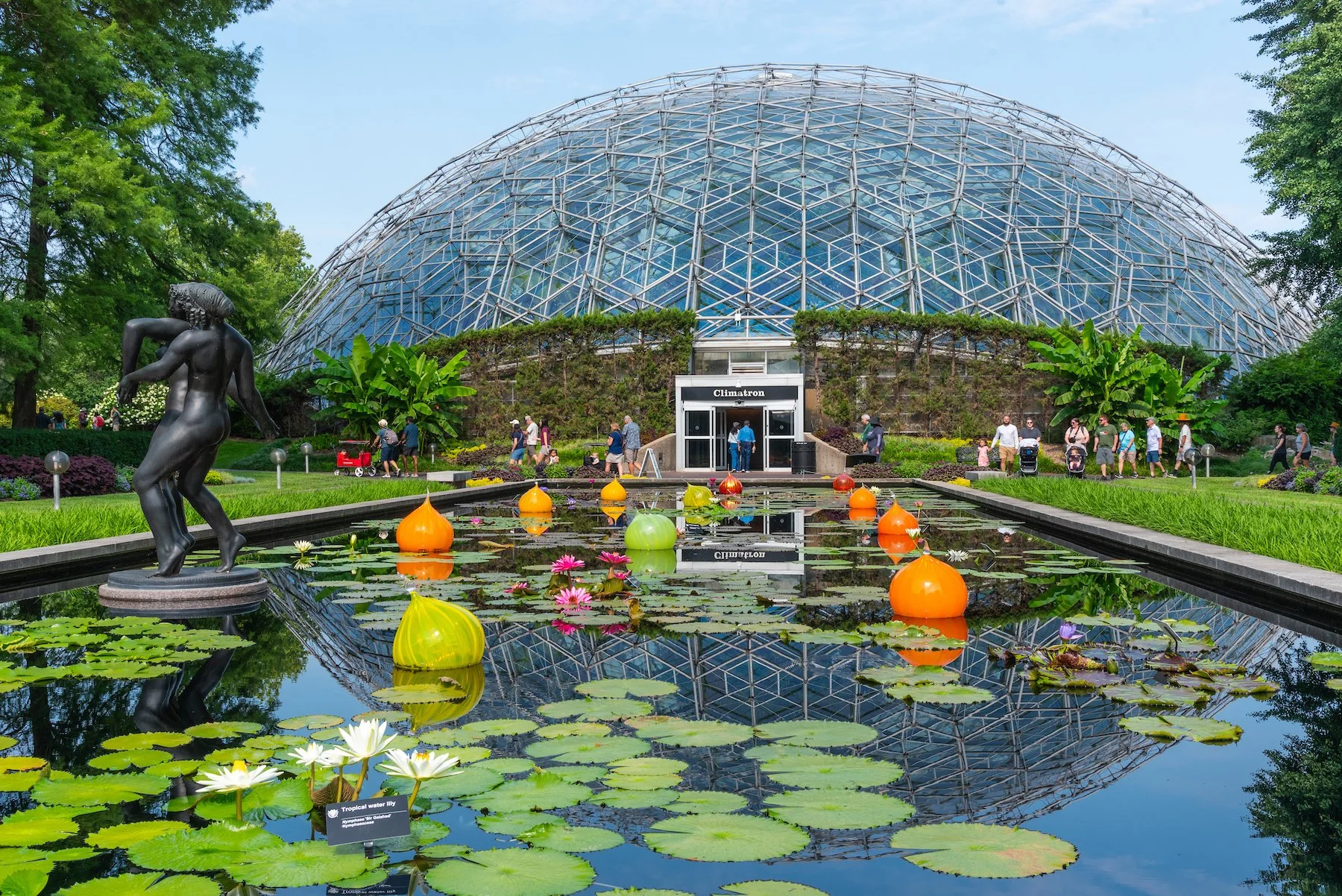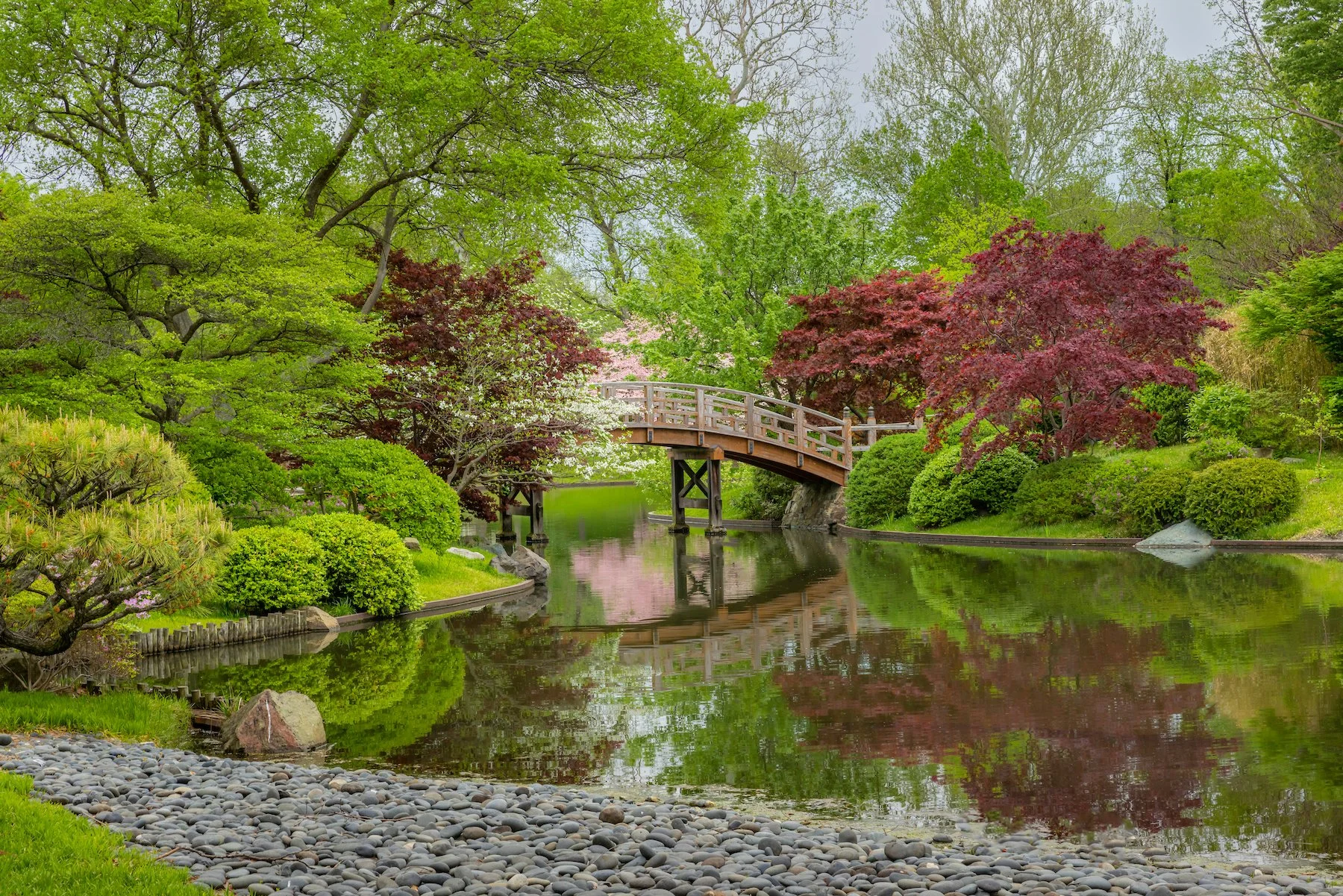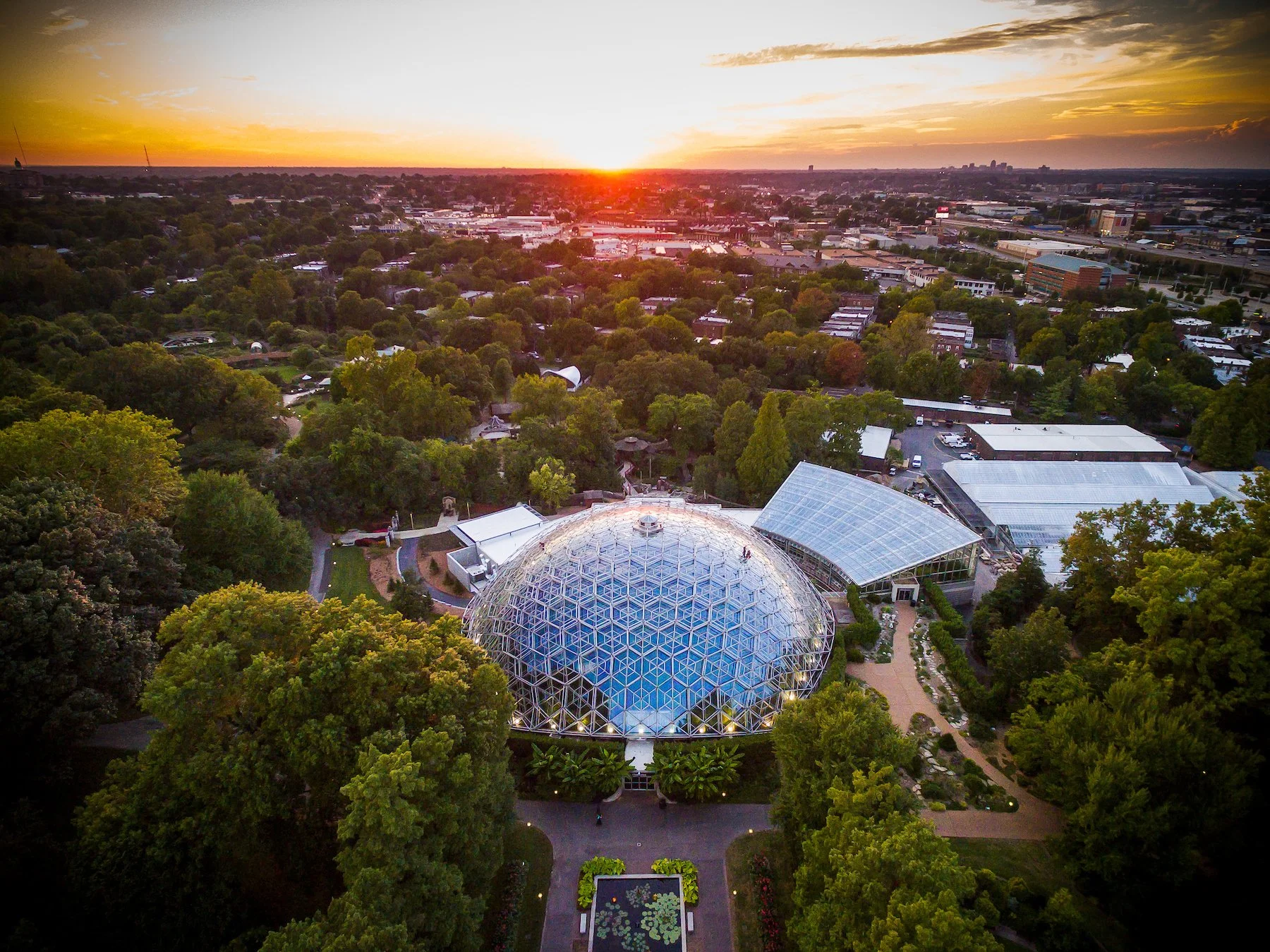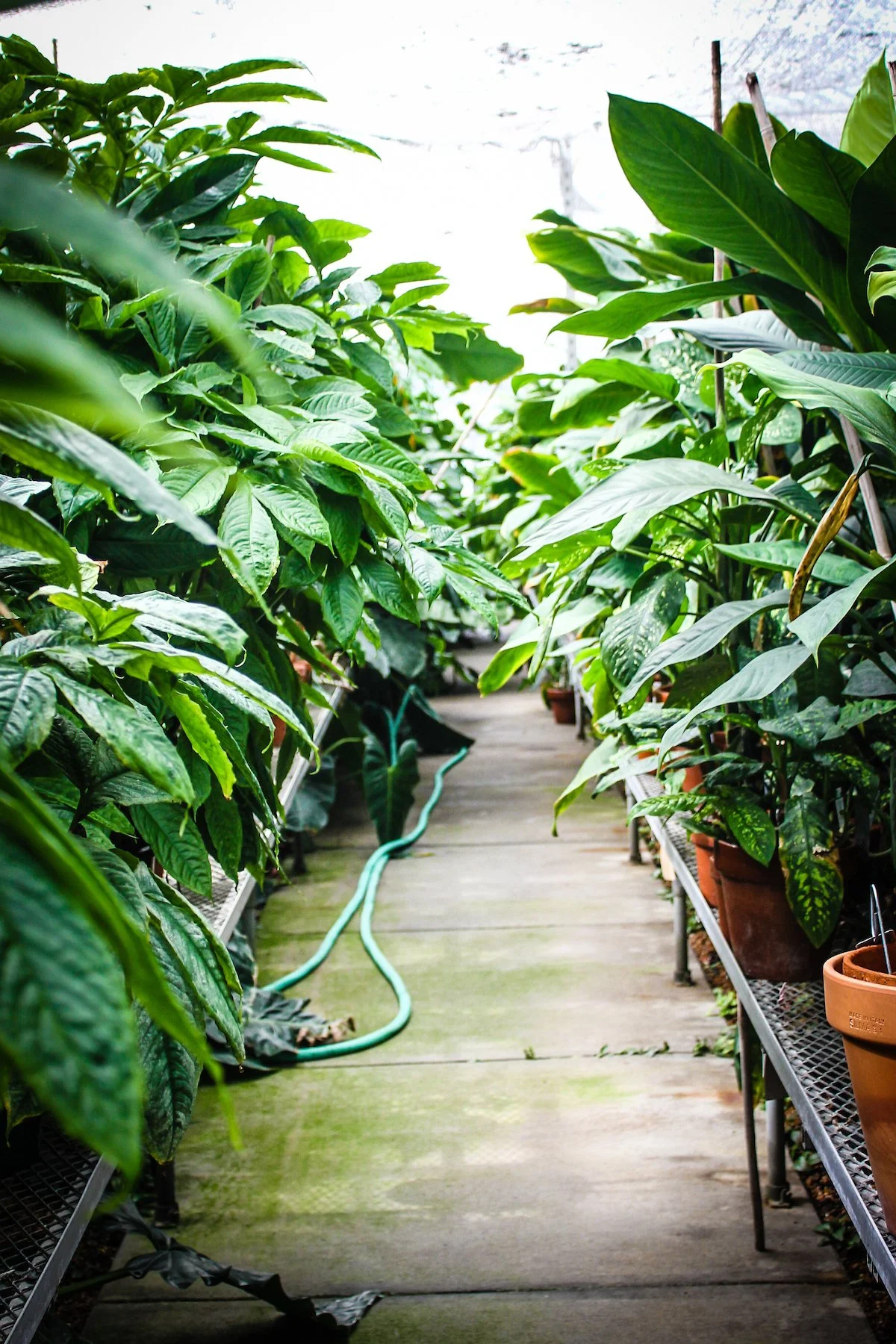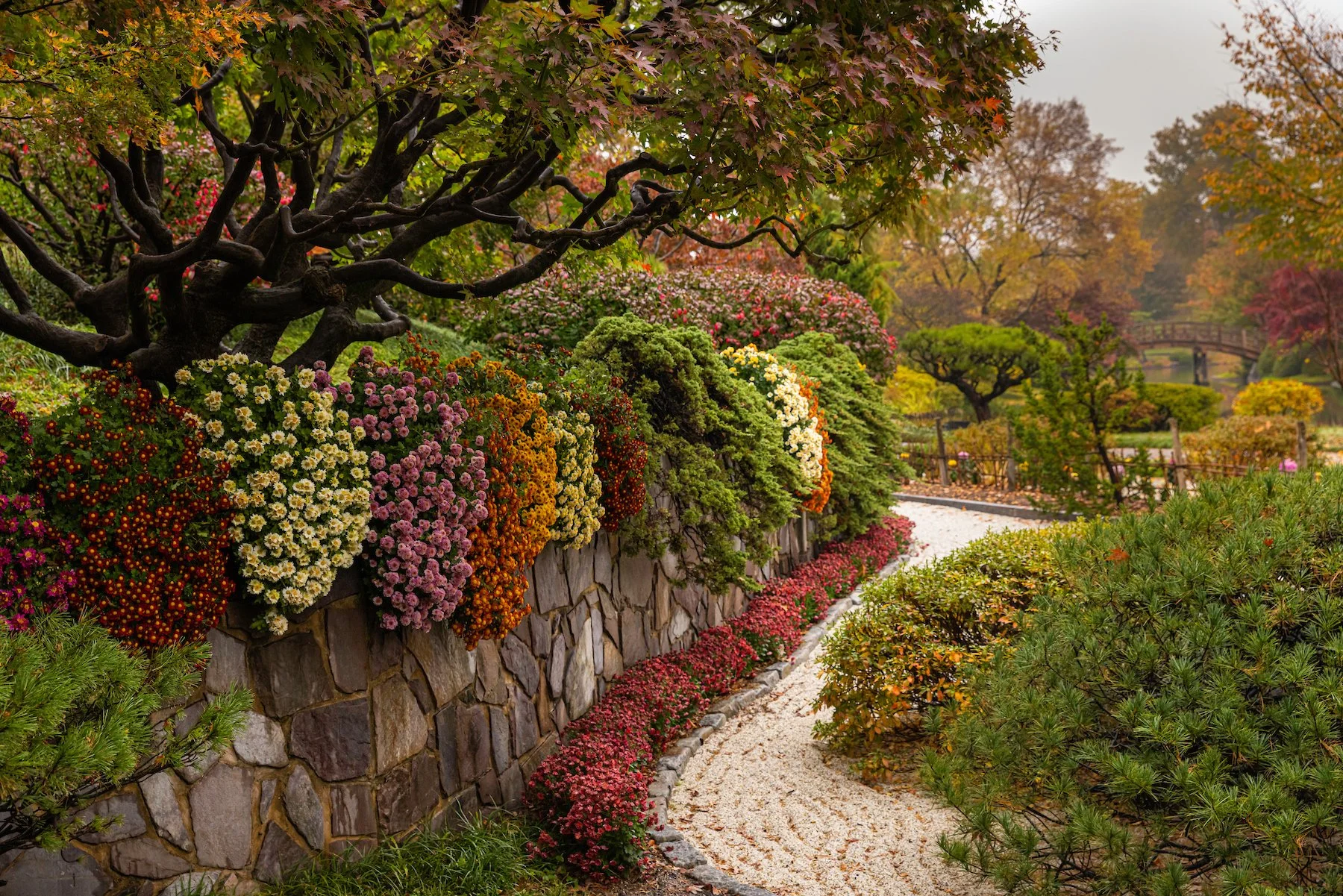Returning to the Garden, and St. Louis
by Craig Kaminer / photos and Sophisticated TV video by John Lore
In the heart of St. Louis, where heritage and horticulture flourish side by side, the Missouri Botanical Garden stands as a global treasure. Founded in 1859, it is the oldest botanical garden in continuous operation in the United States and one of the most respected plant research institutions in the world. With the 2025 appointment of Dr. Lúcia G. Lohmann as president and director—the first woman to hold this prestigious role—the Garden enters a bold new era, bridging its storied legacy with a forward-thinking vision for sustainability, education, and global scientific leadership.
Henry Shaw keeps an admiring eye on Dr. Lúcia G. Lohmann.
Dr. Lohmann’s passion for botany began in her childhood in São Paulo, Brazil. Growing up in a family who loved plants and spent time outdoors, she developed a deep appreciation for nature. Though she initially considered a career in business, everything changed during her final year of high school when a visiting scientist invited students on a field research trip. That experience of working in the field proved transformative. Being surrounded by plants, immersed in nature, and involved in scientific discovery gave her the clarity that this was her calling.
She went on to earn her undergraduate degree in biological sciences at the University of São Paulo, then pursued a Ph.D. in ecology, evolution, and systematics at the University of Missouri–St. Louis. It was during this time that she first became connected with the Missouri Botanical Garden, conducting postdoctoral research at its Center for Conservation and Sustainable Development. This early chapter in her career left a lasting impression.
Two decades later, Dr. Lohmann returned but this time as the Garden’s leader. Having previously served as a professor at the University of São Paulo and later as a professor and director of the University and Jepson Herbaria at the University of California, Berkeley, she stepped into her role at Missouri Botanical Garden in January 2025. Her return, as she describes it, felt like coming home.
Waterfall in Japanese Garden. / photo by Kent Burgess
Her leadership philosophy is rooted in what she calls "co-construction"—a collaborative approach centered on listening, engaging, and building together. Since her arrival, Dr. Lohmann has immersed herself in conversations with the Garden’s staff, researchers, horticulturists, and community partners, aiming to co-create a shared vision for the institution’s future. This inclusive leadership model has already begun to foster a renewed sense of purpose and momentum within the organization.
While collaboration drives her approach, Dr. Lohmann is also clear about the Garden’s strategic priorities. These include maintaining the Garden’s cherished role in the St. Louis community, strengthening local institutional partnerships, and expanding the Garden’s international leadership in botanical science. She believes the timing is right: a new wave of energy and investment in biodiversity is taking root in St. Louis, and the Garden is well positioned to anchor the momentum.
Japanese Garden Drum Bridge Lake / photo by Kent Burgess
One of the city’s little-known but remarkable claims to fame is that St. Louis has more Ph.D.s in the Plant Sciences than any other city in the world. This unique concentration of scientific talent, combined with the Garden’s global reach, positions the institution at the nexus of local engagement and international impact.
While the Garden’s iconic Climatron and seasonal floral displays draw visitors from around the world, it is the institution’s scientific contributions that provide its greatest global influence. The Garden’s herbarium houses more than eight million preserved plant specimens, making it one of the most important botanical archives in existence. These collections are critical for species identification, ecological research, conservation planning, and even inspiration for the arts and humanities.
Drone photo of Climatron at sunset by Nathan Wambold.
Dr. Lohmann views the herbarium not just as a static archive, but as a vibrant and evolving engine for innovation. She sees its potential to support the growing bioeconomy through applications in drug discovery, sustainable materials, and environmental resilience. Because the specimens are preserved with such integrity, they can be used to extract DNA, study chemical compositions, analyze the anatomy, and contribute to a wide range of interdisciplinary research.
Among the most exciting new initiatives is RSI—Revolutionizing Species Identification—an initiative that seeks to digitize the Garden’s entire herbarium collection and apply emerging technologies to dramatically speed up the process of species identification. The result will be a publicly accessible virtual herbarium, enabling researchers and conservationists anywhere in the world to identify plants, build biodiversity conservation strategies, and inform restoration projects, among many others.
Orchid range. / photo by Kristina Schall DeYong
Missouri Botanical Garden green house plants.
This initiative is a forward-looking response to urgent global challenges. As climate change and habitat loss accelerate, timely access to botanical data becomes increasingly essential. RSI will help democratize that data, bringing it into the hands of practitioners, policymakers, and scientists from the Amazon to Africa to the American Midwest and beyond.
Dr. Lohmann believes this digitization effort has the potential to reshape how we understand and protect the natural world. The Garden’s specimens—some centuries old—are more than historical artifacts; they are keys to understanding future ecological resilience.
Still, for all its international reach, the Missouri Botanical Garden remains deeply rooted in its hometown. Dr. Lohmann is committed to ensuring the Garden remains a beacon for the people of St. Louis. Her vision includes expanding community engagement, enhancing accessibility, and making sure that science is both inclusive and inspiring.
She is particularly passionate about youth education. She wants every child in the region to have the opportunity to experience the Garden, to marvel at its beauty, and to discover that science is something they too can pursue. Whether through school partnerships, hands-on workshops, or time spent in the Children’s Garden, Lohmann sees the Garden as a gateway to wonder, learning, and empowerment.
Japanese Garden mums in the fall. / photo by Kent Burgess
This emphasis on local relevance also plays into a broader ambition: To help make St. Louis the “nature city” of the 21st century. With renewed civic interest in biodiversity, sustainability, and urban ecology, Lohmann envisions the Garden as both a hub and a catalyst. Through partnerships with cultural institutions, universities, and city leaders, the Garden is helping to lead a regional movement where green infrastructure and environmental stewardship go hand in hand.
As global crises around biodiversity and climate change intensify, institutions like the Missouri Botanical Garden are stepping into greater roles as educators, researchers, and advocates. Under Dr. Lohmann’s leadership, the Garden is not only preserving the past but helping shape the environmental future.
Her perspective is shaped by both scientific rigor and heartfelt purpose. For her, the Garden is more than a workplace or even a research institution—it is a sanctuary, a cultural pillar, and a source of hope.
"The Missouri Botanical Garden is a place where people come to reconnect—with nature, with each other, and with something larger than themselves," Dr. Lohmann says. "It’s a place where hope is cultivated, literally and metaphorically."



